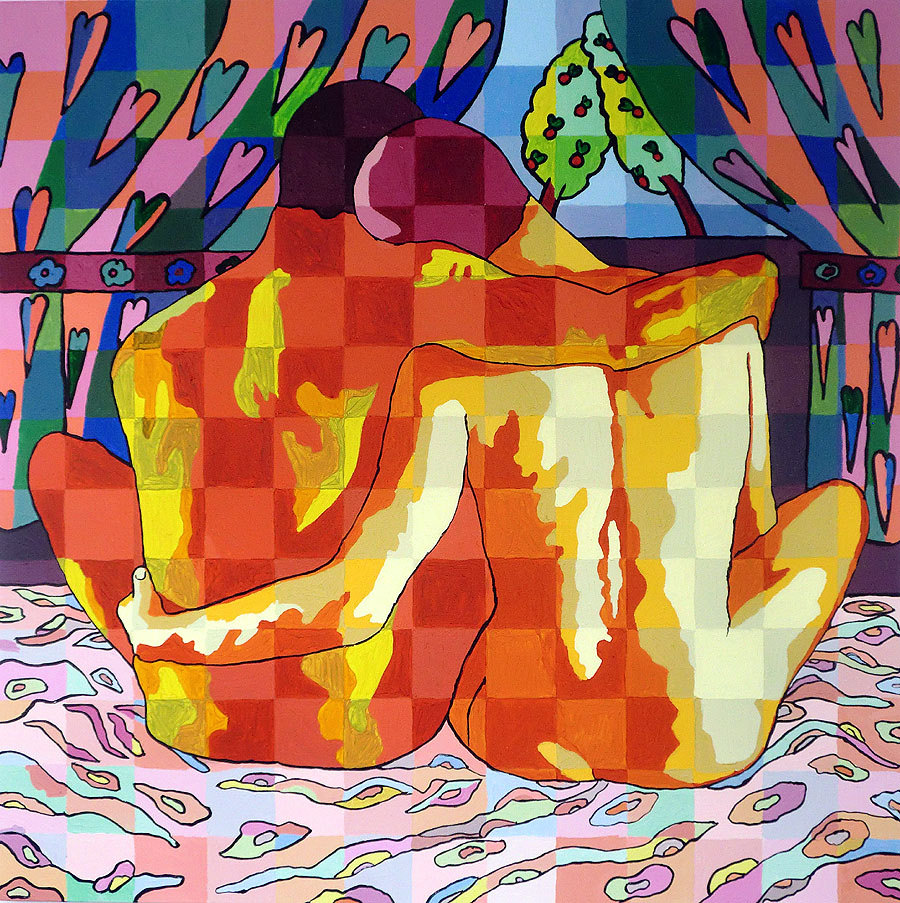
MASC4MASC: Masculine Identity and Homophobia in the Gay Community
Second-year Psychology students participating in the University Honours College follow a workshop on Blogging Science, in which they learn to communicate science to the general public, by means of informing, giving an opinion, and relating issues in science to issues in society. This year a selection of these written blog posts is published on Mindwise. Today’s post is by Kshitij Mor.
One would imagine that homophobia is an evil of the straight community, like you can’t be openly gay, and still be homophobic right? Unfortunately, that’s not always the case. Ask any gay man who’s been on dating apps or has gay friends what Masc4Masc means. There are people who will distance themselves from their own community in an attempt to fit into a mould, that was never really made with them in mind. Masc4Masc is a common phrase used in dating apps to indicate that the person is a very masculine gay guy and only wants to talk to and be associated with similarly masculine men. Many gay men will describe themselves as “I’m gay, but not THAT gay, like I’m just a regular dude.” As if simply being gay makes the person less of a man. This importance towards being a masculine gay man, or be gay but “straight acting”, is a popular phenomenon in the gay community, an attempt to chip away parts of oneself to fit in. Some researchers (Ravenhill, & de Visser, 2018) believe that this possibly stems from the fact that many gay men, during childhood were gender non-conforming boys, something they were most likely bullied for, and consequently learned to de-feminize or have negative connotations about being effeminate. Furthermore, societal ideas of masculinity are rigid and create a mould that is difficult for gay men, on account of their homosexuality, to fit into. However, being men, they still have a need to identify with this ideal of what it means to be a man, and so many men cut away parts of themselves, and distance themselves from their community, sometimes behaving in ways borderline homophobic, in order to be confident and comfortable with their masculine identity.
societal ideas of masculinity are rigid and create a mould that is difficult for gay men, on account of their homosexuality, to fit into
This norm of masculinity and need to identify with this ideal has been linked to psychological distress and many potentially problematic behaviours (Ravenhill, & de Visser, 2018; Sánchez, & Vilain, 2012). Many men in order to affirm their masculinity, distance themselves from effeminate gay guys and alienate themselves from a community that understands their specific struggles, losing support that could potentially have many benefits, which may contribute to the higher rates of mental illnesses found in the gay population as noted in many prevalence studies. I’ve seen so many gay men look down upon and reject other gay men for being “too flamboyant” or behaving in gender atypical ways. A study of homosexual Italian men by Hunt, Fasoli, Carnaghi, & Cadinu (2016) showed that in an experimental condition when the “masculinity” of the participants was threatened, these men identified more with ‘masculine gay men’ and had a lesser desire to interact with ‘feminine gay men’ as compared to the condition where their masculine identity was affirmed. Further research by Sánchez, & Vilain (2012) have also linked masculinity in gay men with negative feelings about being gay. This negative attitudes towards effeminate gay men, and preoccupation with being masculine, is often a reflection of a gay man’s feelings about himself. It’s a struggle between two seemingly conflicting identities that the person holds. Personally, I have heard so many men, ranging on different ends of the sexuality spectrum, talk about how some gay guys “are just too much”, or have had people attempt to compliment me by saying “Oh, I would have never guessed you were gay”, as if that’s a particularly great thing.
Research (Ravenhill, & de Visser, 2018; Sánchez, & Vilain, 2012) shows that many gay men express a desire to act and look more masculine, and less feminine, than they currently do. They find being masculine an important trait for themselves and their potential partners. It’s a disheartening paradox watching openly gay men accept their identity, while at the same time rejecting that community, and making active efforts to ensure that they don’t act gay or look gay, even though they are gay. Perhaps instead of trying to force ourselves into a mould that was never built for gay men, it’s time we destroy the mould in its entirety, so that masculinity isn’t restricted to rigid ideals, and that “being a man” can mean whatever we choose for it to mean.
References
Sánchez, F. J., & Vilain, E. (2012). ‘Straight-Acting Gays’: The relationship between masculine consciousness, anti-effeminacy, and negative gay identity. Archives Of Sexual Behavior, 41(1), 111-119. doi:10.1007/s10508-012-9912-z
Hunt, C. J., Fasoli, F., Carnaghi, A., & Cadinu, M. (2016). Masculine self-presentation and distancing from femininity in gay men: An experimental examination of the role of masculinity threat. Psychology Of Men & Masculinity, 17(1), 108-112. doi:10.1037/a0039545
Ravenhill, J. P., & de Visser, R. O. (2018). ‘I don’t want to be seen as a screaming queen’: An interpretative phenomenological analysis of gay men’s masculine identities. Psychology Of Men & Masculinity, doi:10.1037/men0000163
Note: Cover image by Raphael Perez, licensed under CC BY 2.0



